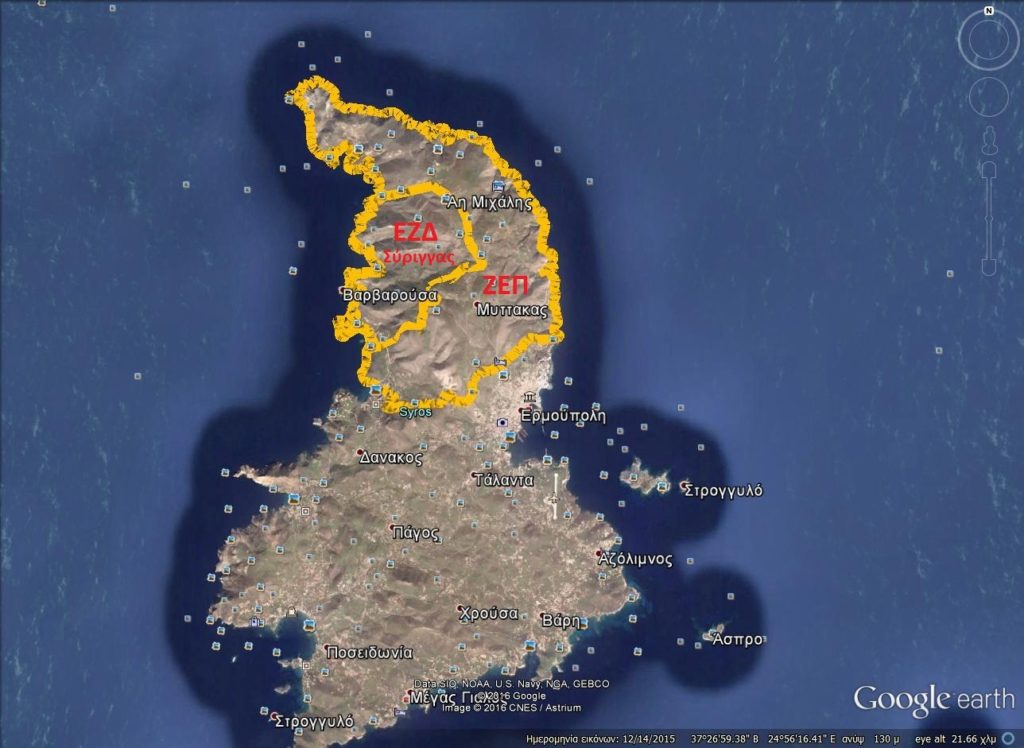It was found by the European Union that the conservation of a certain number of natural habitats and species of Community interest (Special Areas of Conservation), is gradually deteriorating, with the risk of leading to an irreversible loss of a significant part of biodiversity. In order to prevent this danger, it was deemed necessary to establish a coherent ecological network protecting the areas where these types of habitats and endangered species exist. This is the “NATURA 2000” network- A coherent European ecological network of Special Areas of Conservation.
It was established by Article 3 of the Council Directive 92/43/EEC of the European Council of 21 May 1992 “on the conservation of natural habitats and of wild fauna and flora” and it is implemented in the three following phases:
- Each member State was to inventory the natural habitats and species within its territory, based on the lists of ANNEX I and II of the Directive.
- Preparation of a list of proposed areas (sites), based on the inventory, that the above types of natural habitats and species are encountered (National List of Sites).
- On the basis of the criteria set out in Annex III, evaluation on a national level, of the relative importance of each of the above sites for each different type of natural habitat in Annex I and each species in Annex II. Creation, in agreement with each member State and the European Commission of a List of Sites of Community Importance.
Designation of adopted Sites of Community Importance (SCIs) as Special Areas of Conservation (SACs) by the member States, and establishment of priorities for the maintenance and/or restoration, of natural habitat types in Annex I or species in Annex II, in the light of the threats of degradation or destruction to which those sites are exposed.
According to IUCN (International Union for Conservation of Nature), “a protected area is a clearly defined geographical space, recognized, dedicated and managed, through legal or other effective means, to achieve the long-term protection and conservation of biodiversity and natural and related cultural resources”.
The Special Protection Areas(SPAs), are extended areas, that have been designated under the Directive 79/409//EEC “on the conservation of wild birds”, which was adopted in April 1979 and went into effect in April 1981, aiming to secure the survival and reproduction of bird species- migratory and not – and their habitats within the European territory. These areas can be characterized as “protected” and are included into the European ecological network “NATURA 2000”, according the Directive 92/43/EEC.
The Special Areas of Conservation(SACs), are areas that have been evaluated by each member State for their importance on the conservation of the fauna and flora species of Community Interest and then chosen based on their importance.
The Directive 92/43/EEC determines that the member State is responsible for the maintenance, to the desired status, of the habitats and species specified by the Directive. In order to achieve this, in addition to the designation of the Special Areas of Conservation, necessary measures must be taken, either in the form of special management plans, or other measures included in other development plans (e.g. land-use planning). Moreover, any necessary regulatory, administrative or other measures must be taken, in order to protect the above habitats and species. In the Directive there is no specified “method of protection”, but each member State determines the means and procedures for the necessary measures to take place. The aim of the Directive is the conservation of biodiversity, which is one of the basic components of sustainable development. According to the Directive, measures taken shall consider economic, social and cultural requirements and regional and local characteristics.
Therefore, the philosophy of the Directive relies on two-way principle that we cannot manage an area unless we protect it and we cannot protect an area if we cannot not properly manage it.
The NATURA 2000 network in a country that comprises an ecological and cultural inventory, such as Greece, marks the opportunity for the reconciliation and convergence of the policies of sustainable development. The latent resources largely contained in the areas of the network, such as the underground waters, the coast lines, the landscape and the wildlife, are great assets for the country’s future.
Regarding the funding, the Directive provides the creation of an appropriate mechanism, which the member State intends to use to the greatest extent possible. According to the procedure provided in the directive, the member State sends to the European Commission the estimated budget required for the fulfilment of its obligations in the areas with types of habitat and priority species. This way the protection, management, promotion and operation of the sites of the NATURA 2000 network has become a major axis in the formulation of the Operational Programs of both the Community Support Framework (2000-2006) and the National Strategic Reference Framework (2007-2013).
The inclusion of an agricultural site in the NATURA 2000 network, is mostly since, despite the agricultural development of the recent years, the natural habitats and the species have been preserved at least in small localized enclaves in that site. In these areas, any change in the cultivation methods should be avoided. In other areas, like those neighboring wetlands, a change in the cultivation methods should be the main concern of management for the benefit of protection. The abandonment of mountain crops will create problems because of the degradation of biodiversity. During the implementation of the Agri-Environment Regulation 2078/92/EEC, special attention is given to the areas of the NATURA 2000 network.
The sites of the NATURA 2000 network generally are not developed tourist areas. Through the control of new activities and the internal zoning, a strict limitation on the deterioration of natural habitats and species, and a compatible development of mild leisure activities and tourism will be attempted, so that visitors can enjoy the natural environment and become informed of the value of the area. The ecological network can and must be a higher quality cultural network.
(Source: «The Directive on the habitas and the NATURA 2000 network», Ministry of the Environment, Regional Planning and Public Work)
Protected Areas Of Greece
For the designation of a site as protected, according the national legislation (Act 1650/86, as it was amended by the 3937/2011 law) the following are required:
- for the classification of an area as Absolute Protection of Nature, Protection of Natureand National Park, its delimitation and determination of land uses and activities, a presidential order is required, after a proposal of the Minister of the Environment, Energy and Climate Change, and with the recommendation of the “Nature 2000 Committee” and the Secretary General of the corresponding Decentralized Administration, in accordance to the implementation of a Special Environmental Study. The commission of the Special Environmental Study and its final approval is made by decision of the Minister of Environment, Energy and Climate Change.
- for the characterization of an area as a Regional Park, its delimitation and determination of land uses and activities, a presidential order is required, after a proposal of the Minister of the Environment, Energy and Climate Change, and with the counsel of the “Nature 2000 Committee” and the Secretary General of the corresponding Decentralized Administration, based on a special report that substantiates its ecological significance and its protectable assets. Specifically, for the characterization of great-natural-value farmlands as Regional Parks, the presidential order is issued after a proposal of both the Ministers of Agricultural Development and Food, and of Environment, Energy and Climate Change. Specifically, for the characterization of marine areas as Regional Parks, the presidential order is issued after a proposal of both the Ministers of Maritime Affairs and Fisheries, and of Environment, Energy and Climate Change.
- for the characterization of an area as Wildlife Refuge, an ordinance is issued by the Secretary General of the Decentralized Administration, based on a special report that substantiates the ecological or other natural value of the area.
- for the characterization of an area as Protected Landscapeor Protected Natural Formation, an ordinance is issued by the Secretary General of the Decentralized Administration, based on a special report that substantiates the ecological or other natural value of the protectable entity, and on the consultation of the elected Regional Governor.
The protected areas can be managed by Managing Authorities or existing public services, special services and public institutions or entities designated for this purpose and appointed by appropriate contracts (Act 2742/99)
Moreover, five-year management plans for the protected areas must be prepared. These plans specify the direction and priorities for the implementation of projects, actions and measures needed for the efficient protection and management of the protected entities, within the framework of the terms and conditions that are set out in the laws proclaiming the area protected. Management Plans are accompanied by Action Plans.

Syros and NATURA 2000
The European network of protected areas NATURA 2000 consists of two types of areas, the Special Areas of Conservation(SACs), previously known asSites of Community Importance(SCIs), which are determined based on the types of habitats and fauna and flora species mentioned in the Directive 92/43/EEC, and the Special Protection Areas(SPAs) for the avifauna, which are determined based on the species of birds mentioned in the Directive 79/409/EEC.
In many cases, there is overlapping of the two types of protected areas in a geographical region, since an environmentally important site may meet the criteria for entering both categories of protected areas. That is the case for Syros: The SAC for Syros (name: Mount Syriggas up to the coast) is smaller in area than the SPA of Syros (North Syros and islets) and its geographical limits are within the SPA limits.
One important note is that the whole of the Northern Syros, as is defined by the geographical limits of the SPA, isintegrated in the NATURA 2000 network.
That means that also the SAC in Siros are NATURA sites and have the same protection status.
Syros, Apano Meria and the surrounding islets:
- Bambarousa
- Didymi
- Sxinonisi
- Stroggylo (Faros [Light House] or Gaidouronisi)
- Kommeno
- Stroggylo (Komito)
- Aspronisi
Translated by Nikos Vakondios / Edited by Constantine Hatziadoniu
